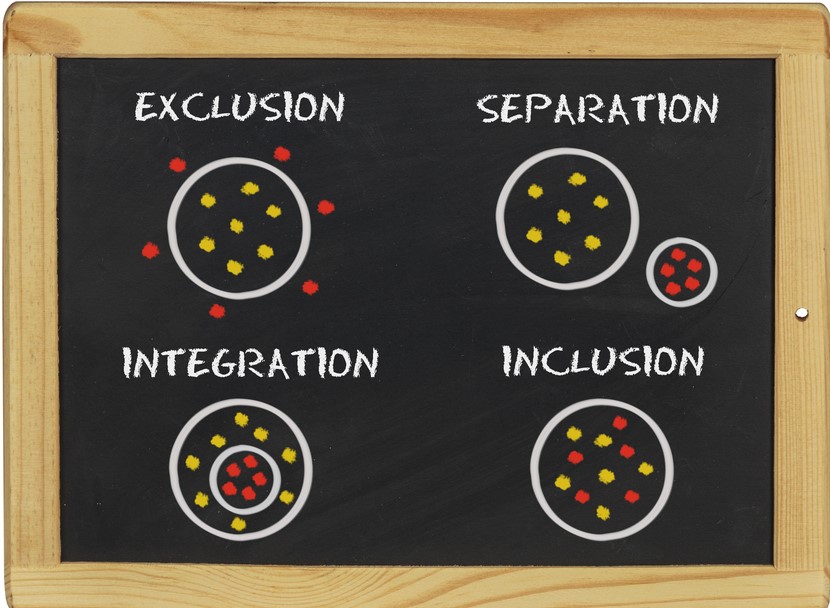Inclusivity and diversity have become very important topics for businesses in the past few years. Many are focusing on inclusivity because of appearance concerns, while others genuinely care about having an inclusive culture at work.
Either way, putting a focus on inclusivity at work is a step forward that also has several benefits for businesses such as better retention, diversity of thought, new innovation, and more.
However, an inclusive work culture goes a lot deeper than just having a diverse team. In our latest episode of the Team Building Saves the World podcast, we talked to Karith Foster—comedian, public speaker, radio personality, and founder of Inversity. Karith highlighted the personal nature of inclusivity and how it’s something we have to do every day, mentioning, “We have to work from the inside out, because that’s where real change happens.”
In this article, we’ll talk about what inclusivity means, why it’s so important, and how to create an inclusive culture at work.
Understanding Inclusion
First, it’s important to understand what inclusion actually means. Since inclusion and diversity have become a hot political topic in recent years, there are a lot of misunderstandings about what inclusion actually is.
Put simply, inclusion at the workplace is creating a culture and environment that respects, appreciates, and utilizes the diversity of employees. Though many think that inclusion focuses entirely on race, that is not true. Inclusion includes a wide array of types of diversity. Let’s take a closer look at the different types of diversity so you can better understand the scope of inclusion.
Types of Diversity
Diversity can refer to all sorts of things that make us unique and different from others. For example, cultural diversity is a big part of inclusivity. Cultural diversity is related to a person’s ethnicity and ties into their values, cultural practices, and more. Even people from the same culture will be unique in their own ways.
Another type of diversity is age diversity. This is one that is often forgotten in talks about inclusion, but it is still a very important thing to discuss. Age diversity is all about having people of different age ranges at your organization. People from different generations bring their unique perspectives to the table, all of which can be valuable to your business.
Here’s a short list of some of the most common types of diversity in the workplace. Keep these in mind for future discussions and talks about diversity. They will help you better understand and create your own culture of diversity:
- Cultural diversity.
- Racial diversity.
- Religious diversity.
- Neurodiveristy.
- Age diversity.
- Sex/gender diversity.
- Sexual orientation diversity.
- Disability diversity.
- Thought diversity.
Now, let’s take a look at the benefits of inclusion and why it makes sense to create a diverse workplace culture.
Benefits of Inclusion
Though the benefits of inclusion might not be readily apparent, they shouldn’t be ignored. There is a moral and ethical case to be made for inclusivity at work. But let’s focus on the business case for inclusion right now.
According to a McKinsey report, companies that have ethnic and or gender diversity outperform those who don’t. Businesses that put a focus on inclusion and have inclusive teams give themselves a financial advantage over those who do not.
Another benefit is reduced turnover. Retention is a constant concern for businesses, and it can be a hard issue to address. Inclusion however can make employees feel more comfortable, cared about, and valued at work. This can directly lead to increased retention, helping you keep your best employees. As Karith said in our interview, “The reality is, if you are not making sure that you have a healthy culture, you’re gonna be losing money left and right because it costs money to replace people.”
Tying into turnover, a workplace culture of accessibility and inclusion can increase your hiring pool and make it easier to find the best employees. For example, many businesses do not focus much on accommodating those with disabilities. However, those employees have just as much to offer as anyone else. By not accommodating them as best as possible, you are losing out on valuable employees who could help your business succeed.
One of the biggest benefits of inclusion is diversity of thought. It’s incredibly important to have different perspectives, ideas, and approaches in a business, as it can help you in nearly every aspect. In terms of innovation, having a constant stream of unique and creative ideas is essential. When it comes to problem solving, you want a bunch of different approaches and ideas so you can find the best possible solution.
The benefits of thought diversity for a business are nearly endless, and with industry leaders like IBM focusing on inclusion, it should be clear that a culture of inclusion in the workplace is essential.
The Importance of Taking Action
The business case for inclusion is compelling, but there’s a lot more to inclusion than profitability. We all know what it feels like to be excluded and dismissed. It’s not fun, and we need to strive to create workplaces where people feel included and valued. People deserve to feel like they belong and are important to their workplace, and inclusion is a big part of making that happen.
Inclusion must be taken seriously. Many businesses try to approach inclusion from a very clinical, business focused perspective. This often leads to nothing actually changing. Businesses call in a diversity expert, do a training or class, and then go back to business as usual. While that might look great from a PR perspective, it has no impact on actual inclusion.
If businesses truly want to create inclusive work environments and see the benefits associated with inclusion, it must be a true goal. It can’t be a one time class or workshop; it has to be something that is considered and mentioned every day.
Key Strategies for Creating an Inclusive Culture at Work
With the basics of what inclusivity is and why it matters covered, let’s move on to how you can create an inclusive culture at work. Developing a culture of inclusion takes time. It is something to work towards, but these strategies will help you reach that goal and sustain it.
1. Building awareness.
One of the first steps towards creating an inclusive culture at work is simply building awareness. You and your employees need to be aware of diversity and inclusion. We all have unconscious biases, whether we know about them or not.
Being aware of our biases, cultural differences, how our words impact others, etc, is a very important step towards inclusion. Open communication is a great way to start building awareness.
2. Encouraging open communication.
As mentioned above, open communication is an essential part of inclusivity. Employees need to be able to talk safely about complex and possibly taboo issues, learn about each other, hear each other’s ideas, and work to understand one another. None of this can happen without an environment that encourages open communication.
Open communication does not include talking down to others. For years, we have tried an approach that involves lecturing people, telling them they are wrong, etc. While the thought behind that is understandable, it simply doesn’t work. Change has to come from within, it has to be personal, and it can be fun too. As Karith mentioned:
“You can’t, you can lecture somebody till they’re blue in the face or you are blue in the face. Everybody’s blue in the face… But if you’re not reaching their heart, if you’re not making it personal, if you’re not connecting them to the experience, nothing’s gonna change.”
3. Inclusive behaviors.
Another way you can create an inclusive workplace is by putting an emphasis on inclusive behaviors. These behaviors can be big or small, but working them into your daily routines can have a big impact.
An inclusive behavior can be something as small as learning about a holiday from someone else’s culture and celebrating it with them. Taking the time to research the holiday, educate the rest of the team, and having the celebration together shows that you care and value the cultural diversity of your fellow employees.
It could also be something more intensive, like making sure everyone’s voice is heard during a meeting. Making sure that everyone gets a chance to speak their mind and have their thoughts heard is one of the most basic inclusive behaviors at work, but it can really show that you value and care about everyone’s input.
4. Training and development.
One final way you can create an inclusive culture at work is through training and development. Workshops like our Sight Unseen experience can be a great way to build empathy, help others get more understanding of others’ struggles, and more. There are a number of trainings that focus on inclusivity, so consider using them to improve inclusivity in your workplace.
Bringing Your Team Together
Creating an inclusive culture at work is essential in the modern world. Besides being the right thing to do, it can have numerous financial benefits such as increased profits, lower turnover, and better creativity/innovation. However, it is something that must be practiced every day and come from a personal place.
While it may seem difficult, it’s possible to create an inclusive culture in your workplace by building awareness, encouraging open communication, promoting and practicing inclusive behaviors, and using the resources available to you like training and development programs.
Bring your team together and implement trust-building strategies in the workplace to build an inclusive environment. Get in touch with us today to see how we can help you and your team develop the inclusive culture your business needs.
















